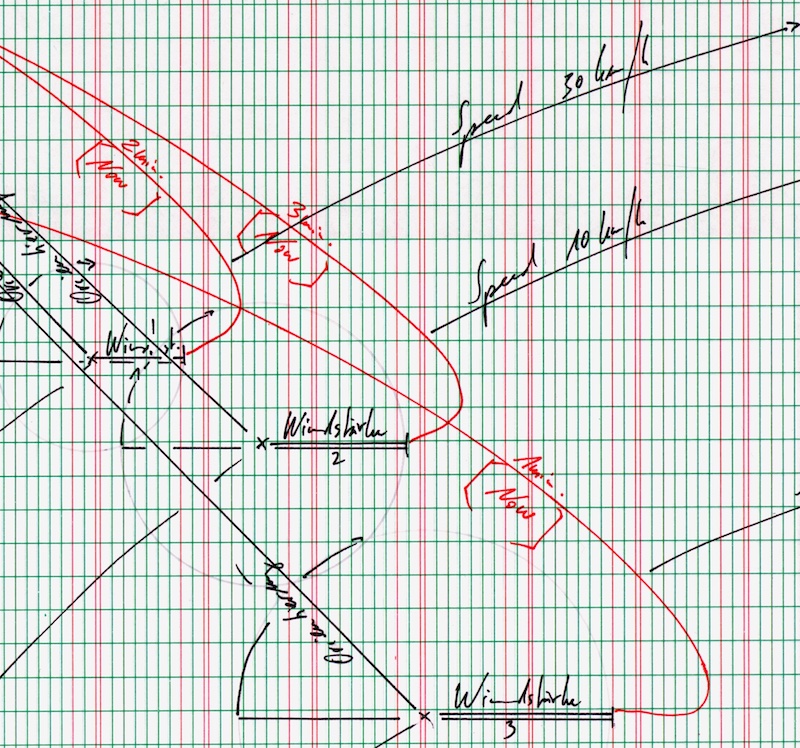
Jorinde Voigt
Trade Area
April 29 to July 29, 2023
Potsdamer Str. 97, 10785 Berlin
Drawing possesses a fleeting quality. A liminal and unfixed space, it is always on the verge of becoming. While classical definitions of drawing align more with the notion of study or preparation, the philosopher Jean-Luc Nancy conceives of drawing as an end in itself, a perceptual attitude, describing it as the “opening of form.”[1] Nancy understands opening in the sense of a beginning, departure, or origin and also as “an availability or inherent capacity.”[2] This notion of opening, or departure, seems fitting for Jorinde Voigt’s exhibition Trade Area, which assembles approximately sixty works made between 2005 and 2018 that trace the development of her diagrammatic explorations of perception and observation. Often undertaken in spaces beyond the artist’s Berlin studio, these intimate works emerge from Voigt’s absorption in other contexts and her concomitant attempt to find a visual language to convey the sounds, interactions, sensations, and associations experienced therein. For nearly two decades, Voigt’s philosophically inflected artistic practice has engaged questions of consciousness, sensation, and presence to articulate graphic systems that sort her impressions of the world. Whether taking the form of frenetic ink markings on graph paper or smooth washes of oil crayon and pencil, these works share an investment in making an idea or a mood tangible and visible—and therefore traversing the boundaries between visible and invisible worlds.
Works like the series Trade Area translate a view of the sea in East Africa into a mini-matrix of space and time, documenting factors like distance, the velocity of the wind, and the movement of objects across the water’s surface in an attempt to register the interlocking rhythms and specificities of place. Mosque—Studie XVII creates a notation to express the dissemination of the adhan, or call to prayer, which is recorded in Mecca and simultaneously broadcast in many mosques throughout the Islamic world. Radiating outwards from the muezzin/speaker, the work graphically communicates the mingling of recorded and live sounds in a mosque on the island of Lamu off the coast of Kenya. Mosque Movie Studie I, on the other hand, functions like an inventory or a documentation of a moment, listing contents such as electricity, muezzin, direction, time, velocity, the speed of wind, and the earth’s rotation. Still other works plot more internal considerations. Now V juxtaposes different notions of time: clock-driven time that dominates most of the industrial world and the more fluid, constant now that prevails throughout the rest of the planet. The series Territorium/Kontinentalgrenze (Job Time Sheet) pits terrestrial boundaries against the various transactions that one undertakes in relation to their own ”territory,” a term Voigt uses in both a political and more broadly personal sense. Created on blank timesheet forms that the artist found in a Kenyan stationary shop, Voigt plots forces of destruction and construction along directional axes to chart the demarcation and exceeding of territorial boundaries as a process of continual negotiation.
Although Voigt belongs to an art historical legacy that spans from the algorithmic patterns and accumulations of Hanne Darboven or Channa Horwitz to the experimental scores of John Cage and György Ligeti, her work possesses a singular fluidity and dynamism that lies in how her drawings—both in their form and in their process—link an inner world of personal experiences and references to the external systems that structure them. The formal language that she develops, as well as her approach to materials and process, resists false binaries like the self and the other or notions of interiority and exteriority in favor of poly-temporal and entangled spaces. Indeed, such an approach aligns with what Nancy describes as the “pleasure” inherent in drawing. Not merely resolved to reproduce existing forms, the gesture that draws for the pleasure of drawing is made “when the design incorporates into its own intention a dimension that exceeds the intention: a tension that allows the form to open itself to its own formation, whatever the idea, aim, or end given.”[3]
Jesi Khadivi
adapted in part from the essay “A Curve That Folds Without Closing” (2022)
[1] Jean-Luc Nancy, The Pleasure in Drawing (New York: Fordham University Press, 2013), 1.
[2] Ibid, 1.
[3] Ibid, 39.
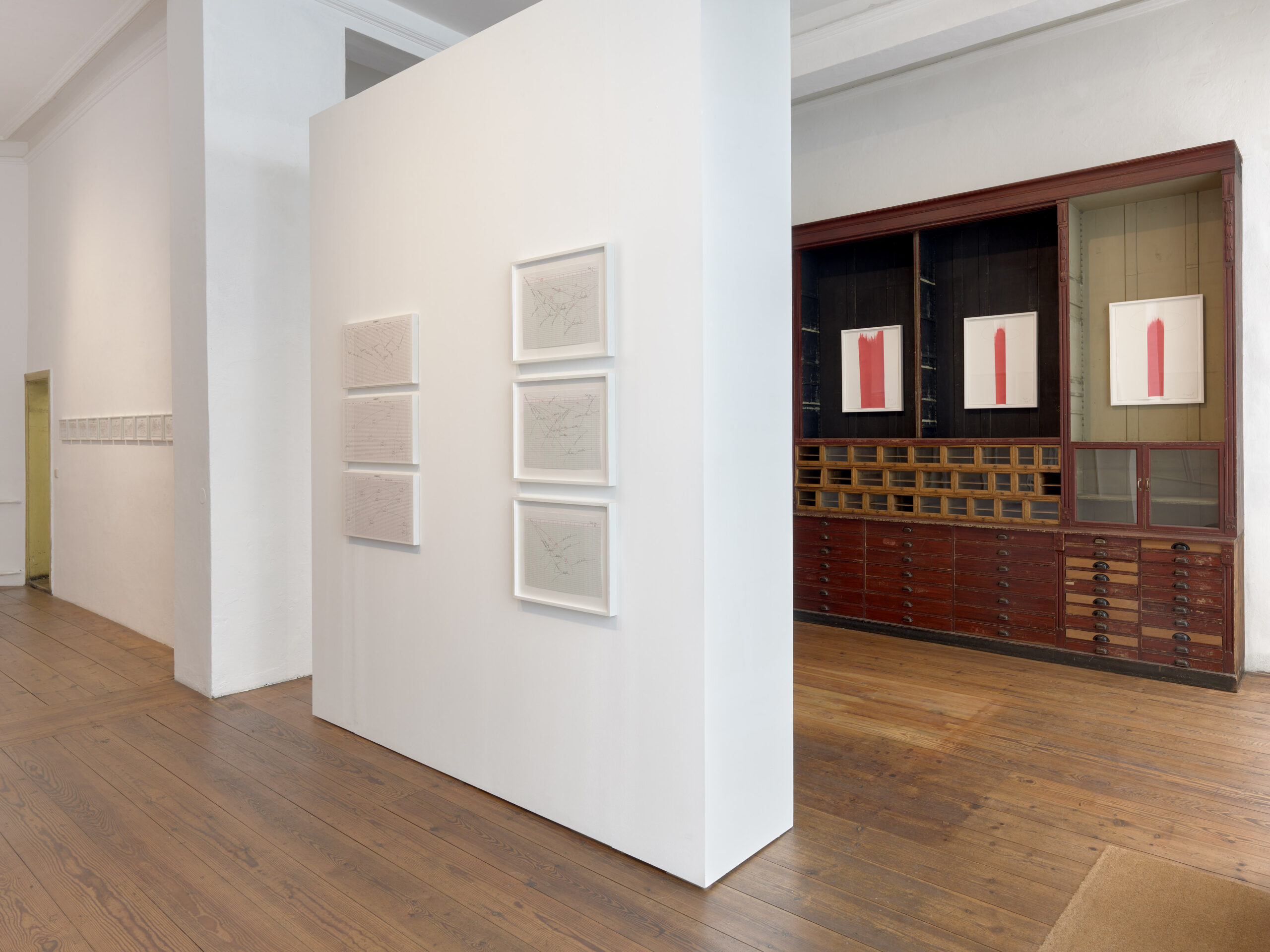
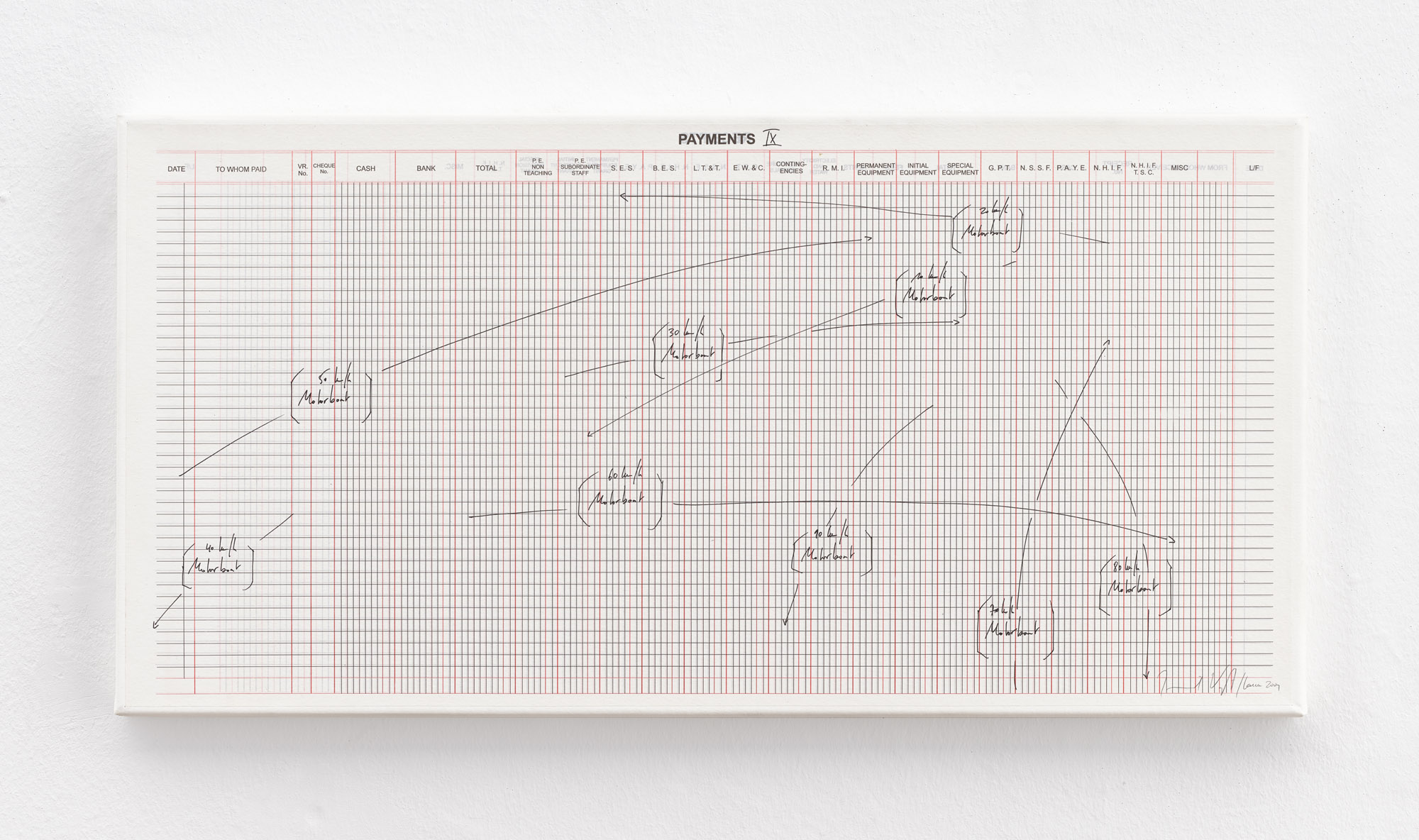
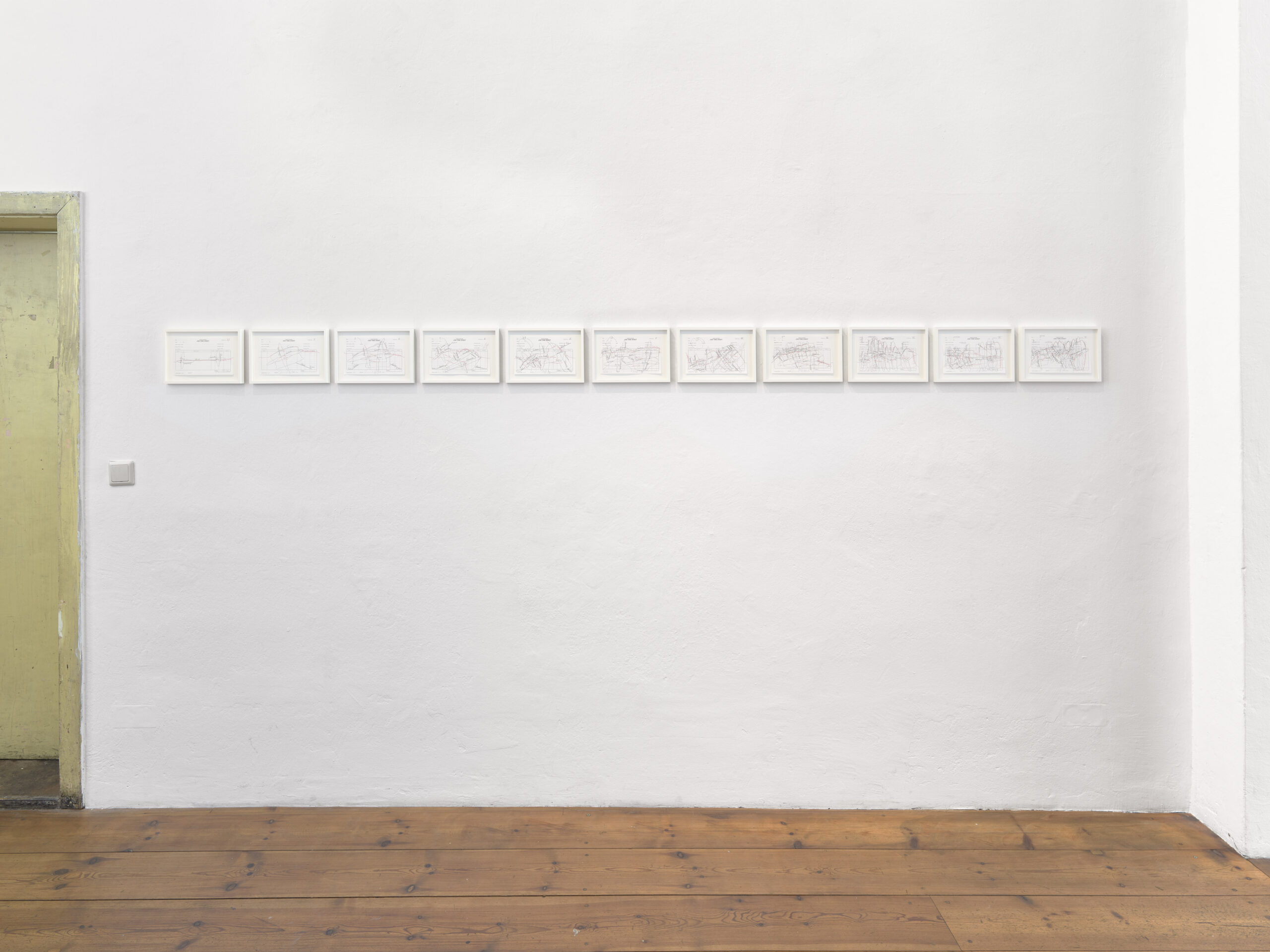
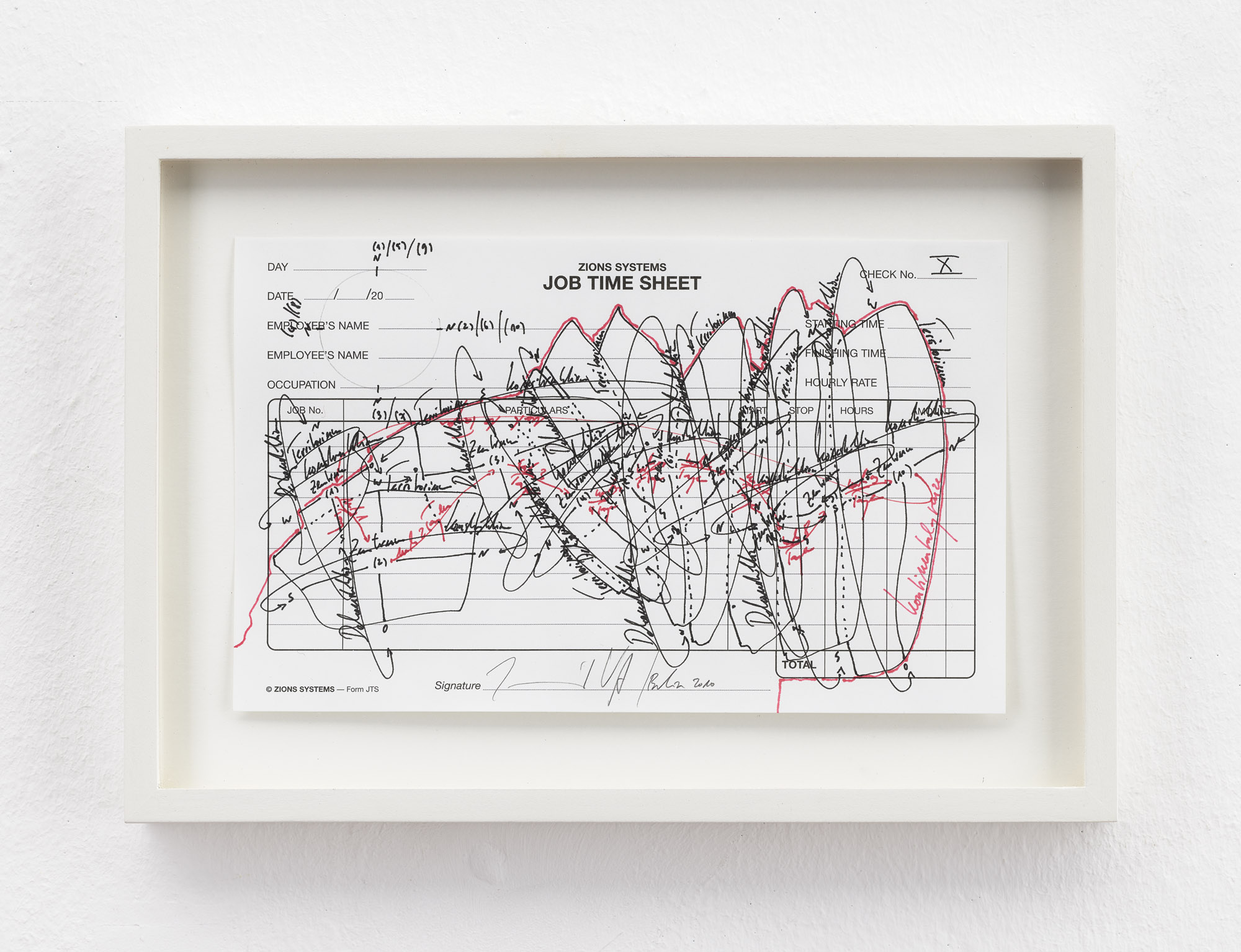
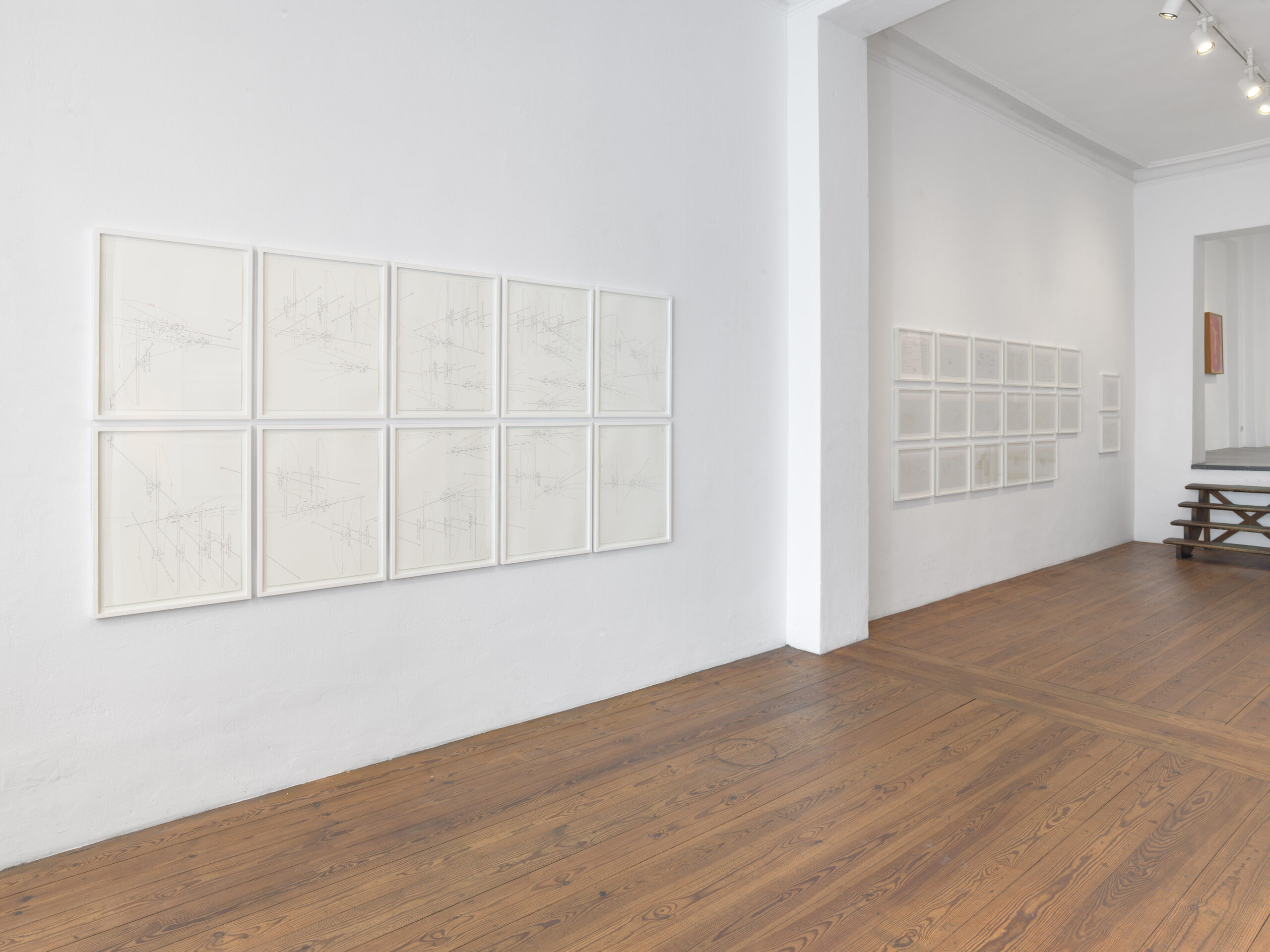
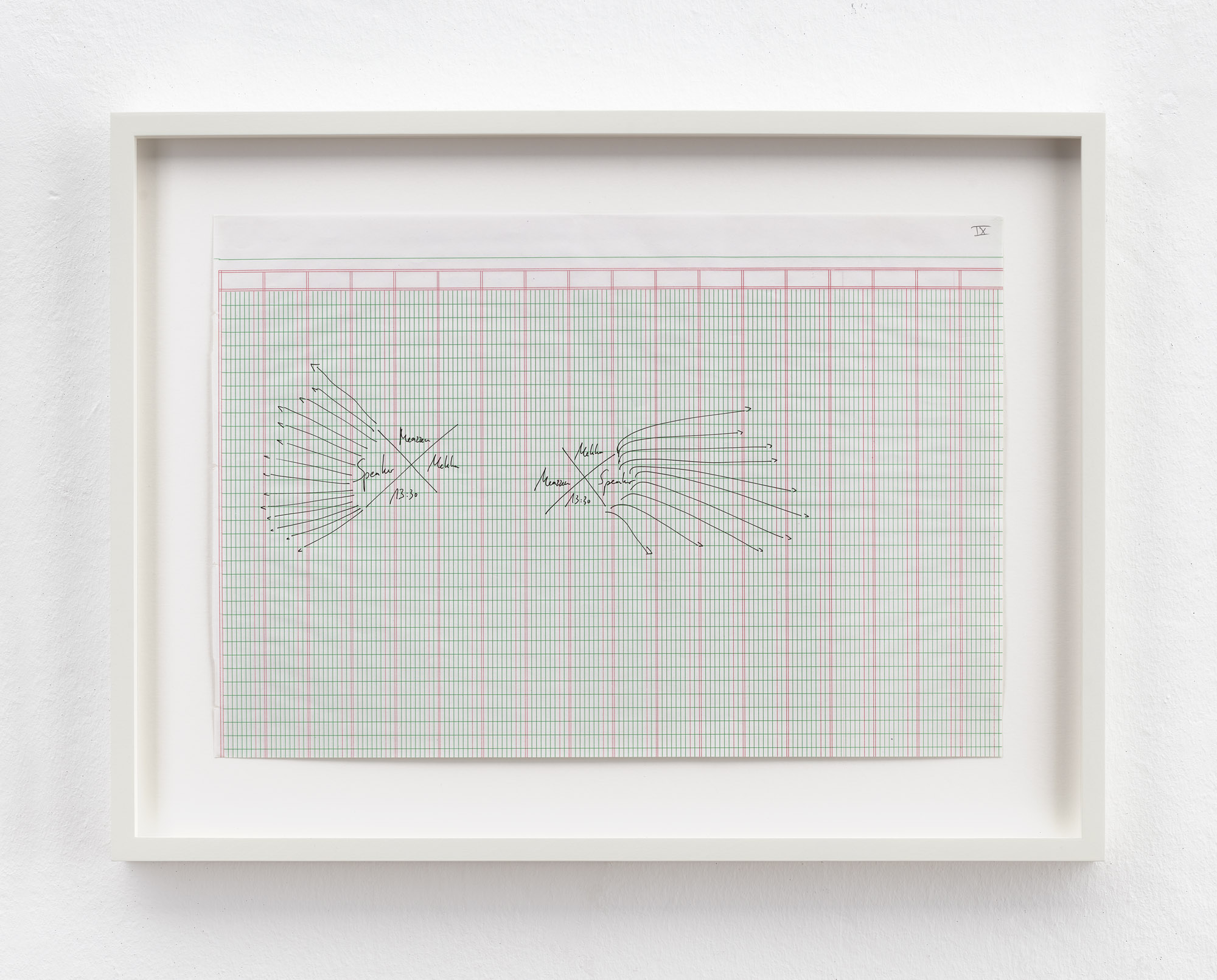
All Images
Copyright and Courtesy: Jorinde Voigt & Klosterfelde Edition
Photos: Eric Tschernow
